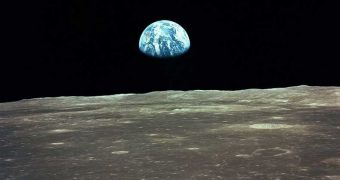The task for such a major operation fell in the hands of the Discovery Channel, and will have the role to commemorate half of century of U.S. space agency activity. When ready, it will be presented in the popular "Planet Earth" series, under the form of a miniseries called "When We Left Earth: The NASA Missions", it will include never-before-seen sequences of film extracted from more than 500 hours of footage from NASA's archive, and restored for high-definition broadcast.
The president and general manager of Discovery Channel, present at a preview at NASA's new Davidson Center for Space Exploration, said that the film would only go through a restoration process, thus they would not be using image altering techniques. Also present at Davidson Space Center were Buzz Aldrin, participant in the Apollo 11 mission, and Charlie Duke from Apollo 16, who provided with an interesting insight into their experience as Apollo program astronauts.
Duke describes his moonwalk on the surface of the Moon along with John Young, more as "two little five-year-olds running around", collecting and comparing lunar artifacts. He also draw attention to the great performance achieved during those days, as on-board computers were less powerful that a pocket scientific calculator today. "My grandson has an iPod with a million times more computational power than what we had", said Duke.
The preview presented at Davidson Space Center spans over 10 minutes and highlights the dangers U.S. astronauts were exposed to, during the Apollo missions, right in the middle of the Cold War space race, and an impressive sequence of images showing the biggest space rocket ever build, the Saturn V, launching into space while burning 20 tons of fuel per second.
NASA plans to return a manned mission by 2020, with the help of it sAres rockets equipped with Orion spacecrafts, which are thought to replace the U.S. space shuttles, that will be put out of service by the end of the decade.
Duke tends to plead for a balance between manned and robotic missions for solar system exploration, while Aldrin says that the key for future missions into space stands in private ventures, which are already capable of inserting manned vehicles into Earth's orbit. Nonetheless, the success of solar system exploration would be in missions beyond the orbit of Earth, and NASA should take a more aggressive posture towards sending manned mission to Mars.
However, the Moon would still have an important role; if we can't go to our closest neighbor, then there is a good chance we would never make it to Mars, Aldrin said.

 14 DAY TRIAL //
14 DAY TRIAL //